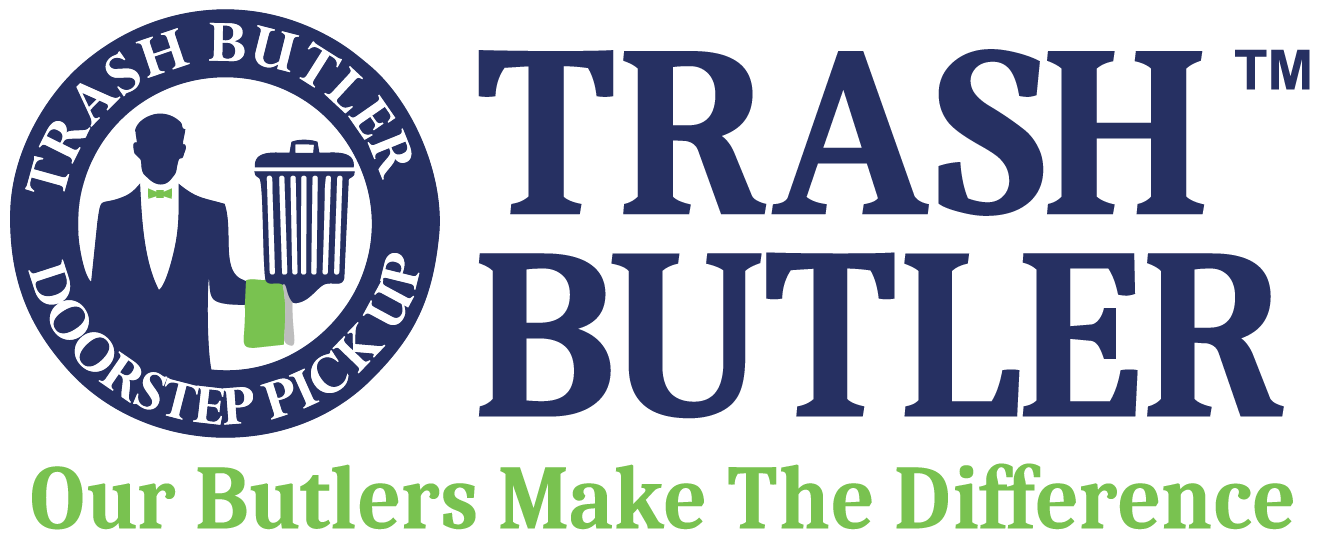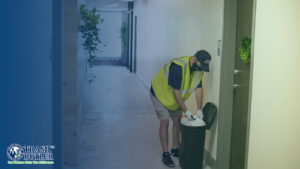Key Takeaways:
- High-Density Communities Require Frequent Trash Chute Cleaning: With more residents and waste volume, trash chutes in multi-family buildings need regular cleaning to prevent blockages, odors, and pest issues.
- Neglecting Trash Chute Maintenance Can Be Costly: Inadequate cleaning can lead to infrastructure damage, increased maintenance costs, and health risks, making proactive care crucial.
- Best Practices for Trash Chute Maintenance: Regular cleaning schedules, professional cleaning services, and eco-friendly products are essential for maintaining trash chutes in high-density communities.
Just as a clogged artery can lead to serious health problems, a neglected trash chute can pose significant risks to a multi-family community. Blockages, odors, and pest infestations are just a few potential consequences of inadequate maintenance.
At Trash Butler, we understand the vital role of clean and well-maintained trash chutes in creating a healthy and comfortable living environment. With years of experience in professional trash chute cleaning, we’ve developed a deep understanding of the unique challenges of high-density communities and the best practices for ensuring optimal hygiene and safety.
In this piece, we will discuss the crucial factors that contribute to the need for frequent trash chute cleaning in high-density communities, the potential dangers of neglect, and how to maintain a clean and safe environment for all residents.
The Role Of Trash Chutes In High-Density Communities
In high-density communities, trash chutes are more than a convenience—they are essential to effective waste management. With hundreds, sometimes thousands, of residents relying on these systems daily, trash chutes streamline the disposal process, ensuring waste is removed efficiently and hygienically. However, the very nature of their heavy use underscores why regular cleaning is critical to maintaining their functionality and safeguarding the health of residents.
Centralized Waste Management
Trash chutes are the backbone of centralized waste management in multi-family apartment communities. Instead of residents navigating elevators and stairwells to dispose of trash, chutes provide a quick, direct method to send waste to designated collection areas. This system minimizes congestion, reduces labor for maintenance teams, and ensures that waste is contained and directed to the proper disposal points.
Resident Convenience And Community Cleanliness
One key role of trash chutes is to enhance resident convenience. They allow residents to dispose of waste quickly without leaving their floors, contributing to a clean and organized living environment. This is especially important for high-density communities, as it reduces the likelihood of trash accumulating in hallways, stairwells, or other communal spaces.
Odor Control And Air Quality
Trash chutes are designed to contain odors by directing waste to a centralized disposal area. When properly maintained, they ensure unpleasant smells are confined to designated spaces rather than permeating living areas.
Common Challenges With Trash Chutes In High-Density Communities
High-density communities increasingly rely on trash chutes to manage daily waste disposal efficiently. However, trash chutes’ convenience comes with challenges, especially when they aren’t cleaned frequently.
Blockages And Backup
One of the most prevalent issues is blockages within the chute system. With substantial waste being deposited daily, items not meant for the chute, such as large bags or improper materials, can lead to clogs. These inconvenient blockages can result in significant waste removal delays, elevating the risk of pest infestations and unsanitary conditions.
Odor Control
Another key challenge is the management of odors. As waste builds up, particularly in a high-density environment where waste volume is naturally higher, the chances of foul odors emanating from the chute increase substantially.
Without regular cleaning, these odors can permeate common areas, elevators, and even individual units, leading to complaints from residents and potentially affecting the community’s reputation.
Pest Infestations
Consistent trash flow without effective and frequent cleaning invites unwelcome pests such as rodents and insects. These pests are attracted to food waste and can enter the community through improperly maintained chutes. Infestations pose health risks, resulting in expensive pest control measures if left unchecked.
Maintenance Costs
Neglecting frequent trash chute cleaning can escalate maintenance costs. Blockages, pest issues, and odor control may require additional interventions from maintenance teams or third-party contractors. Proactive cleaning reduces these risks, ensuring the system operates smoothly and minimizing unexpected expenses.
How High-Density Living Increases The Need For Frequent Trash Chute Cleaning
High-density living, such as in apartment buildings and condominiums, significantly increases the need for frequent trash chute cleaning due to several key factors:
- Increased Waste Volume: With multiple households sharing a single trash chute, the volume of waste generated is substantially higher than in single-family homes. This constant influx of trash can quickly lead to buildup, blockages, and overflowing chutes if not properly managed.
- Diverse Waste Streams: High-density living often involves a greater variety of waste streams, including food scraps, packaging materials, and potentially even hazardous materials. This diversity can complicate waste disposal and increase the risk of contamination within the chute system.
- Higher Risk of Misuse: In multi-family settings, residents are more likely to misuse the trash chute. This can include disposing of large furniture, hazardous materials, or liquids and improperly bagging items, leading to spills and leaks within the chute.
- Increased Potential for Odor and Pest Issues: The concentrated volume of waste, combined with potential leaks and spills, creates an ideal environment for the growth of bacteria and the attraction of pests like rodents and insects. This can lead to unpleasant odors, unsanitary conditions, and potential health hazards for residents.
Health And Hygiene Risks Of Neglecting Trash Chute Maintenance
In high-density communities, trash chutes play an essential role in managing the daily disposal of waste from numerous households. However, when the maintenance of these chutes is neglected, significant health and hygiene risks can escalate quickly.
Pest Infestations
One of the most immediate concerns of inadequate trash chute cleaning is the attraction of pests. Rodents, cockroaches, and insects are drawn to the organic waste residues often left in poorly maintained chutes. These pests not only pose a nuisance but are also carriers of various diseases, which can spread to residents, exacerbating health issues within the community.
Odor And Air Quality Issues
Trash chutes that are not cleaned frequently can develop severe odor problems. The buildup of waste residue releases unpleasant odors that can permeate through the building, negatively affecting the air quality. This can lead to discomfort for residents and may even contribute to respiratory issues for those living near chutes.
Bacterial And Viral Contamination
Accumulated waste in trash chutes can also become a breeding ground for harmful bacteria and viruses. Neglecting regular cleaning can increase the number of pathogens that may be transmitted through touch or air, posing health risks to community members. Frequent trash chute cleaning is essential in minimizing these biological hazards and safeguarding resident health.
The Cost Of Neglect: Infrastructure Damage And Repairs From Poor Trash Chute Maintenance
The consequences of poor trash chute maintenance can extend far beyond unsightly odors and pest infestations; the true cost lies in the damage that can occur to the chute system itself and the building’s infrastructure.
Blockages And Jamming
A trash chute that isn’t regularly cleaned is prone to accumulating debris and waste materials, leading to blockages. Over time, these blockages can cause trash to get stuck in the chute or even spill back into hallways, creating an unpleasant experience for residents.
In severe cases, blockages may cause the chute’s mechanism to jam, requiring costly repairs or a complete system overhaul. The expense of repairing or replacing parts of the chute system far exceeds the cost of routine cleaning and maintenance.
Corrosion And Material Degradation
Residue from food waste, liquids, and cleaning products can erode the interior of trash chutes, leading to rust and corrosion. Over time, this degradation weakens the chute’s structure and functionality, making it more susceptible to leaks and other damage.
The longer these corrosive elements remain unaddressed, the greater the risk of structural damage. The cost to repair or replace a corroded trash chute system is often much higher than the cost of regular maintenance and cleaning.
Increased Maintenance And Operational Costs
Ignoring regular trash chute maintenance leads to more frequent and costly repairs. As trash chutes become clogged or damaged, the time and resources needed to address these issues escalate. Rather than proactively addressing minor issues through regular cleaning, property managers will find themselves dealing with unexpected repairs, which can disrupt the operation of the building and result in higher maintenance costs over time.
Signs Your High-Density Building Needs More Frequent Trash Chute Cleaning
In high-density communities, maintaining cleanliness and sanitation is critical not only for resident satisfaction but also for the health and safety of the building. Here are some key indicators suggesting that your building may require more frequent trash chute cleaning:
- Persistent Odor: If there is a constant unpleasant smell near trash chutes or on entire floors, it is a clear sign that waste build-up is causing odor issues. Regular cleaning can mitigate these odors by preventing residue accumulation.
- Slow Trash Flow: When residents notice that trash is not swiftly going down the chute, it may indicate blockages or build-up within the chute system. Prompt and frequent cleaning sessions can ensure smooth disposal operations.
- Increased Pest Activity: Any surge in pest presence, such as rodents or insects, near trash chutes signals waste attraction. Regular cleaning disrupts these pest environments and prevents infestations.
- Residents’ Complaints: If your residents report issues related to the trash chutes, including smells, pests, or any inconvenience, it is crucial not to take these lightly. Frequent cleaning can address most tenant concerns, enhancing their overall living experience.
- Visible Residue or Build-Up: Regular inspections might reveal grime, residue, or waste build-up around chute doors or inside the chute itself. This visual cue is a strong indicator of the need for immediate cleaning.
Best Practices For Frequent Trash Chute Cleaning In High-Density Communities
Maintaining a clean and hygienic trash chute system is essential in high-density communities, where waste accumulation can occur rapidly. Implementing best practices for frequent trash chute cleaning not only enhances the living conditions for residents but also extends the life of the chute infrastructure itself.
- Scheduled Cleaning Intervals: Standardizing cleaning schedules based on the building’s occupancy and waste generation patterns can ensure consistent maintenance. Due to increased usage, high-density communities should aim for more frequent intervals, such as weekly or bi-weekly.
- Use of Professional Cleaning Services: Leveraging specialized cleaning services ensures using industry-designed products and techniques that effectively clean and sanitize trash chute systems. Professional teams are trained to address the unique challenges of multi-story chute operations.
- Environmentally Friendly Products: Select cleaning agents that are effective and environmentally friendly. This approach supports community sustainability initiatives and safeguards residents’ health.
- Regular Inspections: Routine inspections of trash chutes can identify potential issues before they become significant problems. Inspections should assess blockages, structural integrity, and any pest-related challenges.
- Resident Communication and Education: Keeping residents informed about scheduled cleanings and how they impact their daily routines fosters cooperation. Educating residents about proper waste disposal methods can minimize chute blockages and reduce cleaning frequency.
- Use of Deodorizers and Pest Deterrents: Incorporating deodorizers and non-toxic pest deterrents can mitigate odors and prevent infestations, enhancing the community’s overall cleanliness and health standards.
Final Thoughts
Trash chutes are a cornerstone of effective waste management in high-density communities, but they require regular cleaning to maintain their functionality and prevent health risks. Frequent maintenance not only helps prevent blockages, odors, and pest infestations but also protects the overall infrastructure of the building.
Property managers should take proactive measures to ensure trash chutes are cleaned on a consistent basis, using professional services and environmentally friendly products to keep residents safe and comfortable. A clean trash chute system is key to fostering a healthy living environment and avoiding costly repairs.
At Trash Butler™, we understand the challenges faced by property managers and residents alike. Our comprehensive services are designed to not only address these issues but also enhance the livability and appeal of your apartment community.
Request a Quote: Fill out a form to see how Trash Butler™ can benefit your community.
Read also:
- How Regular Trash Chute Cleaning Reduces Pest Problems In Apartment Complexes
- Eco-Friendly Solutions For Cleaning Trash Chutes And Compactors
- The Importance Of Valet Recycling For Eco-Friendly Apartment Complexes
Frequently Asked Questions About Why Trash Chutes Need More Frequent Cleaning In High-Density Communities
Can neglecting trash chute cleaning affect the health of residents?
Yes, neglecting regular cleaning of trash chutes can lead to unsanitary conditions that may impact residents’ health. Accumulated waste can attract pests and produce unpleasant odors, contributing to respiratory issues and other health hazards.
Are there any legal requirements for trash chute maintenance in apartment buildings?
Many municipalities have specific health and safety regulations requiring regular trash chute maintenance to ensure sanitary conditions. Property managers need to be aware of and comply with these local health codes to avoid fines and improve community health standards.
Can a dirty trash chute increase the risk of fire?
Indeed, dirty and clogged trash chutes can pose a significant fire hazard. Accumulated waste can be flammable, and neglected chutes can lead to blockages that exacerbate the risk of fire spreading through an apartment building.
What cleaning methods are used for trash chutes in high-density communities?
Professional cleaning services typically use high-pressure washing, degreasers, and deodorizing techniques tailored to clean and sanitize trash chutes effectively. Advanced cleaning methods ensure that every aspect of the chute is free from debris, pests, and unpleasant odors.
How often should trash chutes be cleaned in high-density residential buildings?
The frequency of trash chute cleaning depends on the size and usage of the building. Still, high-density communities typically require more frequent cleaning—often monthly or bi-monthly—to maintain optimal hygiene and safety standards.
How can property managers schedule trash chute cleaning with minimal disruption?
Property managers can partner with professional services, like Trash Butler™, that offer flexible scheduling options. Planning cleanings during off-peak hours or coordinating with resident notifications can help ensure the process is seamless and minimally disruptive.







